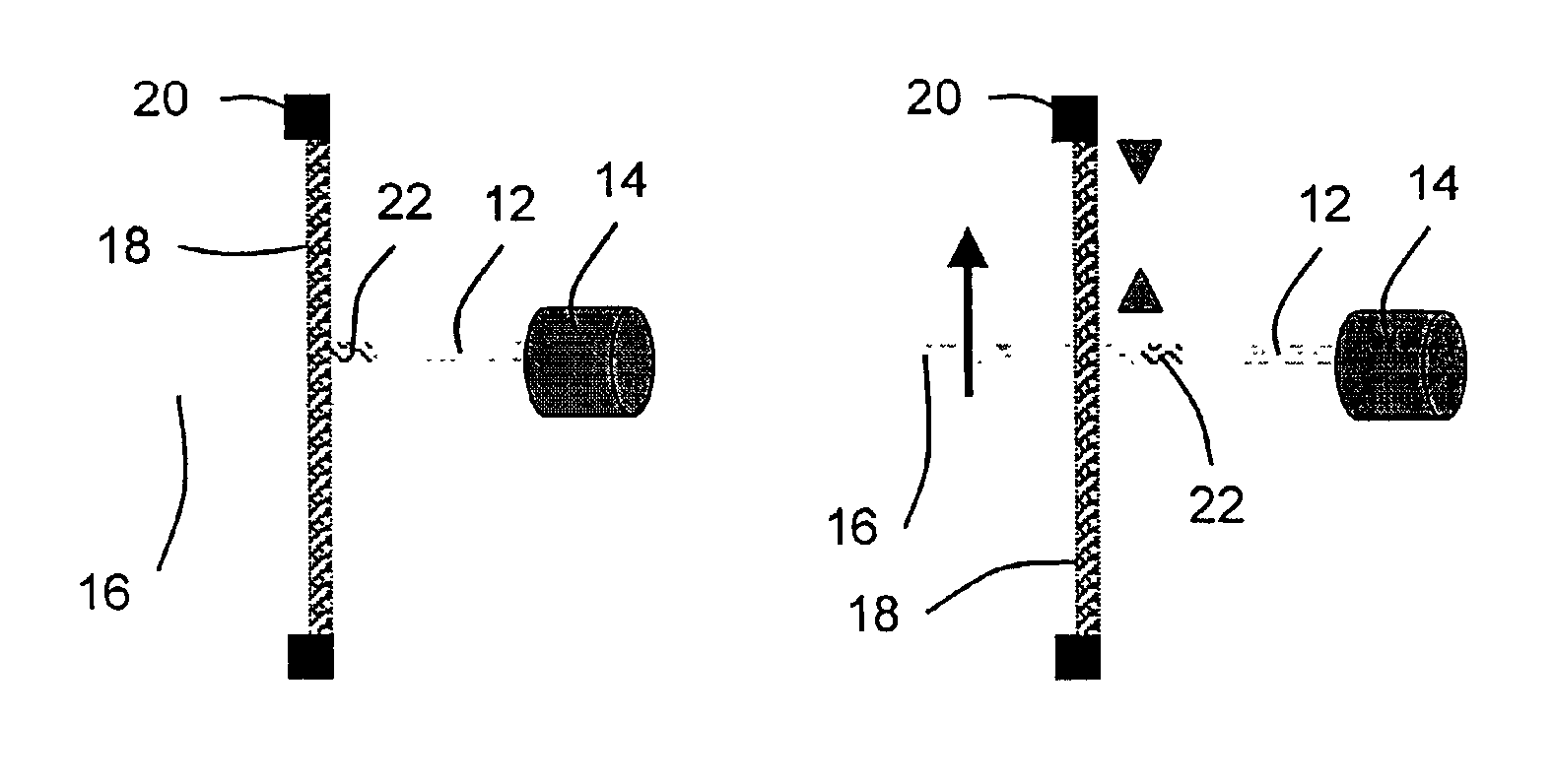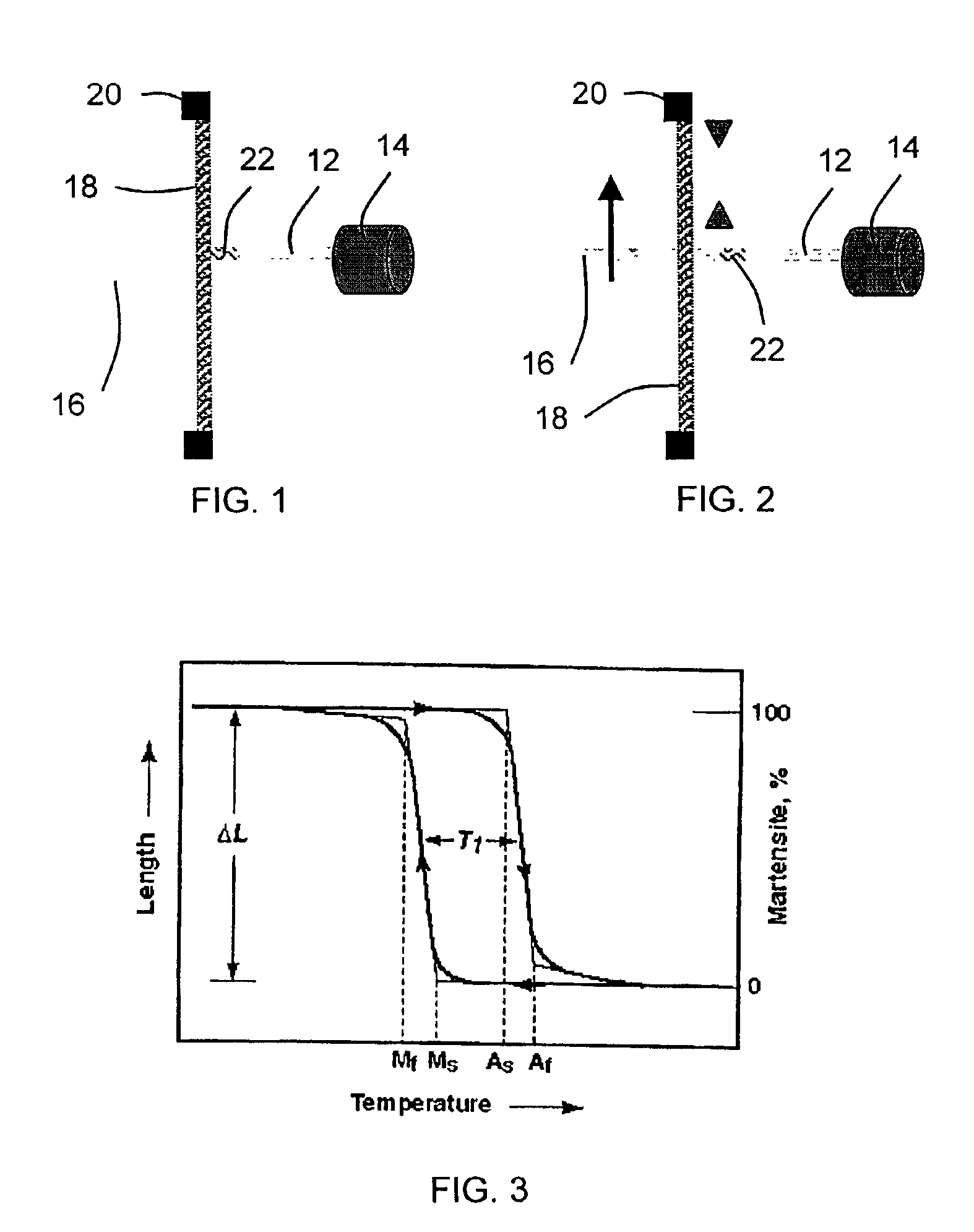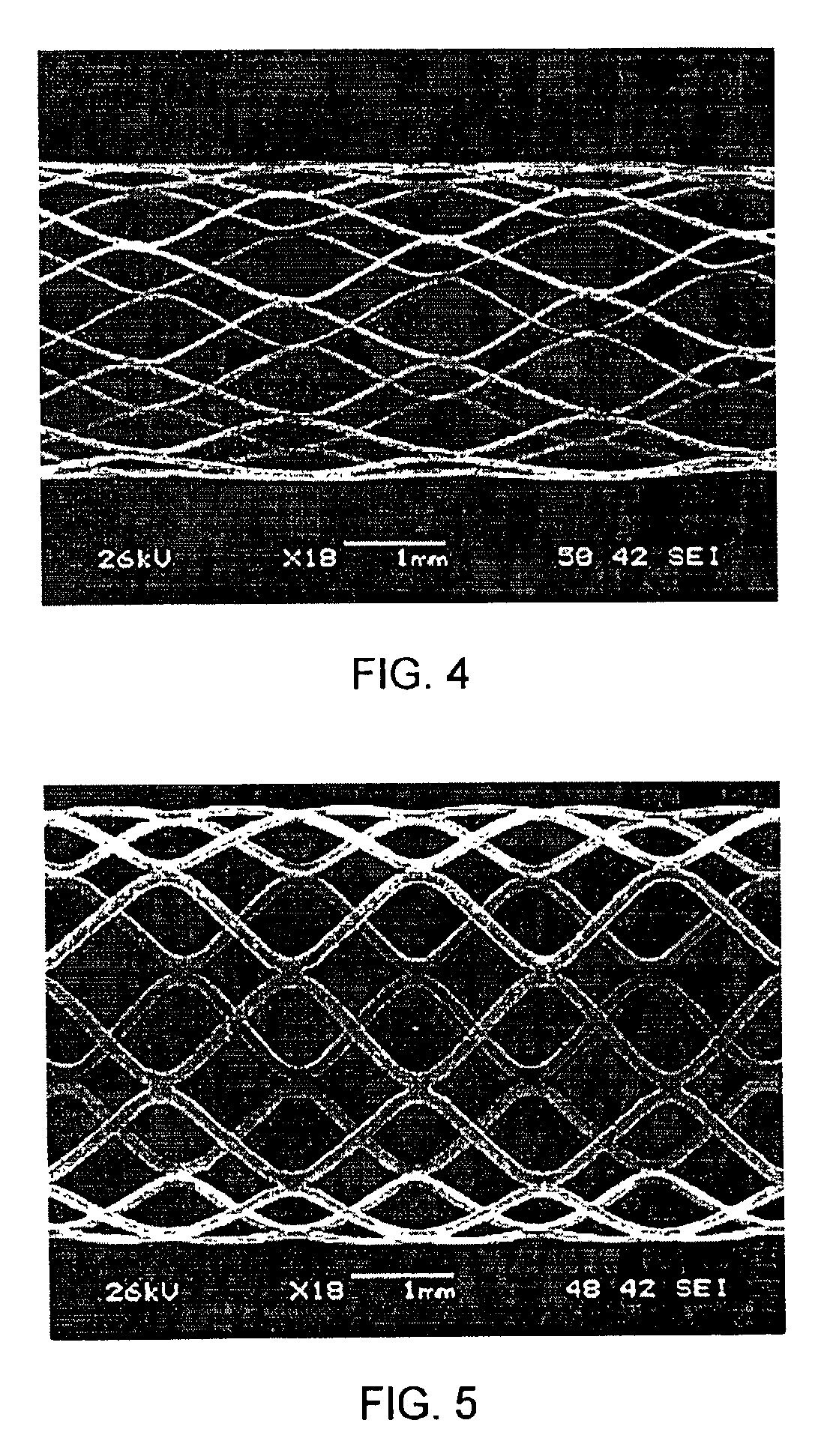Photon-conducting media alignment using a thermokinetic material
- Summary
- Abstract
- Description
- Claims
- Application Information
AI Technical Summary
Benefits of technology
Problems solved by technology
Method used
Image
Examples
Embodiment Construction
An apparatus for aligning photon-conducting media is illustrated in FIG. 1. The apparatus includes a transmitting medium 12 (e.g., a glass or polymer optical fiber) coupled with a photon source 14, such as an infrared or near-infrared laser diode. A receiving medium 16 (e.g., a glass or polymer optical fiber similar to that serving as the transmitting medium) is mounted in a thermokinetic structure 18 comprising a shape-memory alloy. The shape memory alloy can be in the form of a woven fabric and is supported by a rigid frame 20 to maintain its overall shape.
Methods for using the apparatus to align optical media are described in greater detail, below; however, a brief outline as to the operation of the apparatus of FIGS. 1 and 2 is as follows.
The process begins by directing a photon beam 22 from the photon source 14 through the transmitting medium 12 and onto the thermokinetic structure 18, which is locally heated by the radiation. The locally heated region of the thermokinetic stru...
PUM
 Login to View More
Login to View More Abstract
Description
Claims
Application Information
 Login to View More
Login to View More - R&D Engineer
- R&D Manager
- IP Professional
- Industry Leading Data Capabilities
- Powerful AI technology
- Patent DNA Extraction
Browse by: Latest US Patents, China's latest patents, Technical Efficacy Thesaurus, Application Domain, Technology Topic, Popular Technical Reports.
© 2024 PatSnap. All rights reserved.Legal|Privacy policy|Modern Slavery Act Transparency Statement|Sitemap|About US| Contact US: help@patsnap.com










